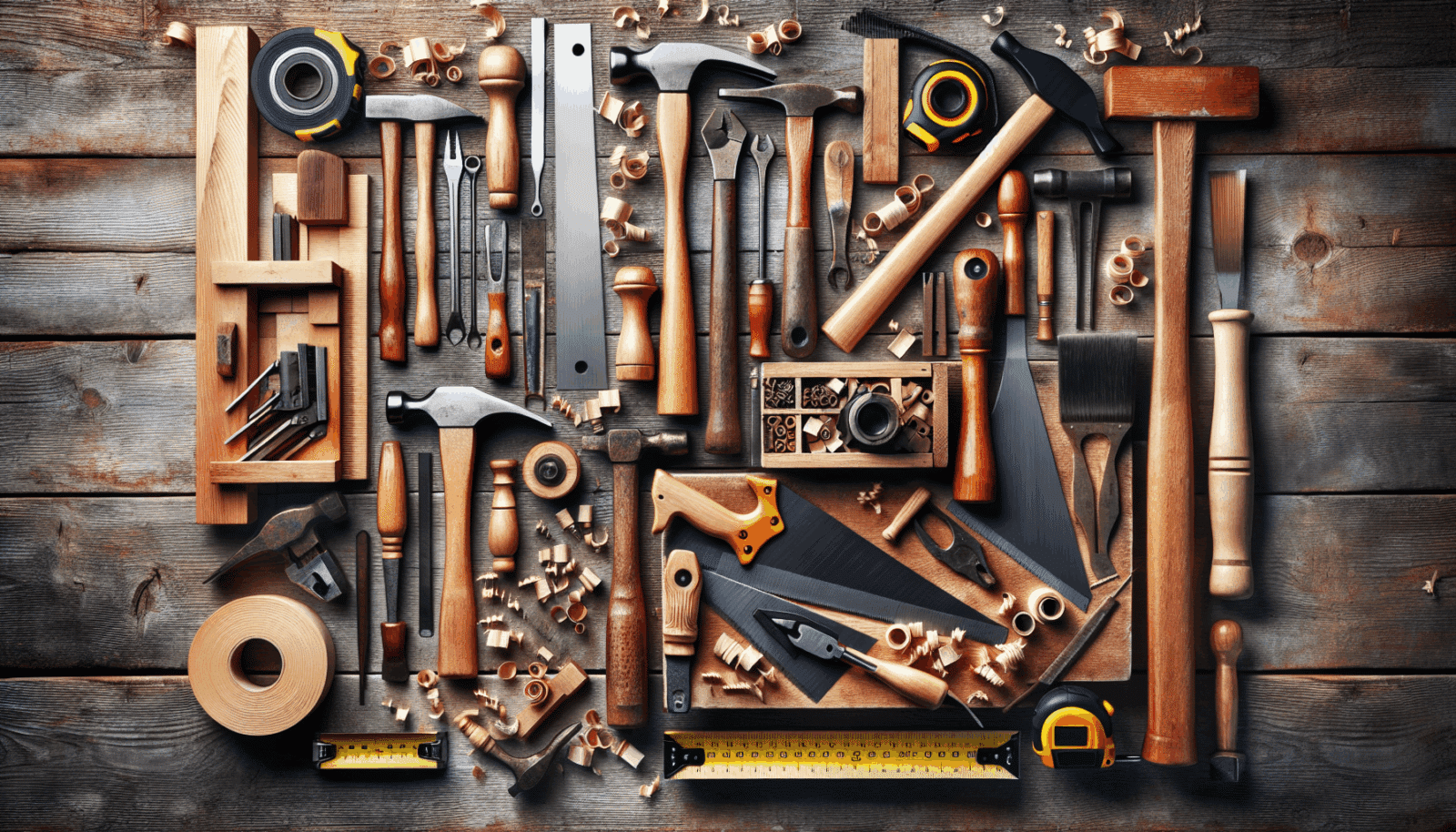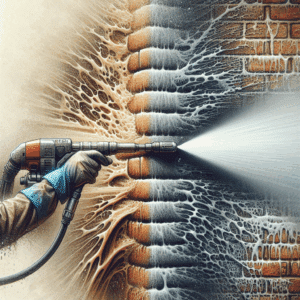Welcome to the home of stunning sunsets and endless charm—Savannah, GA—where your humble abode deserves nothing but the best care. At Savannah Handyman, we understand the importance of every nail, board, and beam in the structure of your home. Yet, many homeowners overlook essential carpentry skills that could save the day in a pinch. That’s why we’ve crafted this guide, lending you our expertise to tackle some common carpentry challenges with poise and confidence. Whether you’re a DIY enthusiast or a complete novice, this post is your trusty companion in learning the must-know skills for every homeowner.
Contents
Understanding Basic Measurements
Before you reach for that hammer, let’s talk measurements. Knowing how to read a tape measure is more than just numbers—it’s about accuracy in ensuring everything fits perfectly. Whether you’re putting up shelves or fixing cabinets, measurements make all the difference.
To start your carpentry journey right, invest in a reliable tape measure and familiarize yourself with both imperial and metric systems. Don’t just rely on guesswork; take precise measurements twice to confirm accuracy. This not only prevents costly mistakes but also builds your confidence as you navigate larger projects.
Besides the tape measure, acquaint yourself with a square tool for understanding angles and ensuring straight edges. This tool is indispensable in your carpentry toolkit, providing you with the precision needed to make your projects look professional.
The Art of Hammering and Nailing
Ah, the satisfying thwack of a hammer meeting its mark—it’s the very soundtrack of carpentry! But it’s more than just brute force; technique plays a key role in driving those nails home effectively.
Start by selecting the right hammer for your project. A claw hammer is versatile and well-suited for most household tasks. Grip your hammer firmly but relaxed, allowing the tool to do the work for you. Practice swinging with smooth, steady strokes to gain control and precision.
When nailing, ensure your nail goes in straight by initially tapping gently to anchor it. Once secured, increase force to drive it deeper. Remember, the aim is to secure your structure without bending nails, which often leads to mishaps and frustration.
Mastering Sawing Techniques
A trusty saw is your best friend when it comes to cutting wood to exact sizes and shapes. But don’t be daunted—it’s about precision and patience rather than power.
Choose the type of saw that best fits your project, whether it’s a handsaw for manual precision or a circular saw for powerful, rapid cuts. Ensure the wood is securely clamped to avoid injury and maintain control over your cuts.
Begin cutting by marking the line with a pencil, giving you a visual guide. As you saw, apply steady pressure and keep a firm grip, ensuring the blade stays aligned with the marked path. With practice, you’ll achieve straight, clean cuts—key to any successful carpentry project.
Familiarizing with Wood Types
Wood isn’t just wood; each type has its personality, strengths, and quirks. Knowing your oak from your pine can significantly impact the success of your project.
Savannah’s climate may influence your choice of wood, given its humidity and heat. Hardwoods like oak and maple offer strength and durability, perfect for furniture that withstands time. Conversely, softwoods like pine and cedar provide flexibility for more decorative jobs.
Be mindful of grain patterns and knots, which can affect cutting and nailing. Before you start any project, do a quick research about the wood that suits your specific needs and aesthetic desires, ensuring a seamless blend of functionality and beauty.
Understanding Joint Techniques
Ever wondered what keeps furniture solid and intact over years? It’s all thanks to the diverse range of joints in carpentry.
- Dovetail Joint: Known for its strong holding power and resistance to being pulled apart, this joint is ideal for drawers and boxes.
- Mortise and Tenon: A timeless classic designed for strength, frequently used in tables and chairs for a sturdy hold.
- Butt Joint: The simplest form of joint where two pieces of wood are butted together. Though less strong, it is easy to create and suitable for frame construction.
- Miter Joint: Perfect for edges that meet at a corner, miter joints add elegance to picture frames and boxes with its angled edges.
- Lap Joint: Common in woodworking where partial thickness of both parts overlap, providing stability for frames and window casings.
Embracing the Level
Everything in carpentry strives towards one ultimate goal—balance. To achieve this harmony, knowing how to utilize a level is indispensable.
An overlooked tool by many, the level ensures that your shelves don’t end up lopsided or your table wobbly. Familiarize yourself with both traditional bubble levels and laser levels for more modern solutions.
Using a level is straightforward: Place it on your surface, and adjust until the bubble rests firmly between the lines. This simple act goes a long way toward ensuring stability and safety in your home enhancements.
Sealants and Finishes
Meet the unsung heroes of carpentry—sealants and finishes, which preserve the integrity of your creation, protecting it from the elements and wear.
In Savannah’s humidity, sealants play a critical role in preventing moisture damage. Choose from a range of options like polyurethane for a robust finish or linseed oil for a more natural feel. Apply in thin, even coats and allow proper drying time to enhance durability.
Finishes are equally important for adding an aesthetic touch. Stains, varnishes, and paints not only beautify but also provide a protective layer that prolongs the life of your woodwork. Pick a finish that matches your interior or exterior theme, giving your project a polished, lasting glow.
The Importance of Sanding
Don’t underestimate the transformative power of sanding! It refines your project, smoothing out rough edges to deliver pristine, flawless surfaces.
Sanding ensures that your wood is ready to accept paints or stains evenly, providing a seamless look. Use coarse sandpaper initially to remove imperfections, gradually moving to finer grains for a silky finish.
As a hot tip, always sand in the direction of the grain to avoid scratches. Proper sanding elevates the quality of your work, offering a feel that is as pleasing to the touch as it is to the eye.
Building Confidence with Small Projects
Finally, nothing consolidates these skills like practice. Start small before moving on to more complex undertakings.
Consider building a birdhouse, a simple bookshelf, or repairing a wobbly chair. These projects allow you to apply your newfound knowledge and see tangible results.
Every project completed bolsters your confidence, preparing you for future tasks within your home. The satisfaction of crafting with your hands is unmatched, empowering you with both skills and gratification.
Conclusion
Developing essential carpentry skills as a homeowner in Savannah, GA, equips you with the ability to tackle those everyday issues confidently. Whether you’re fixing a loose floorboard or creating custom plans, these skills lay the foundation for home improvements. Should you need more help or a professional touch, don’t hesitate to reach out to Savannah Handyman by phone at 912-600-3283 or Request a Free Quote.




